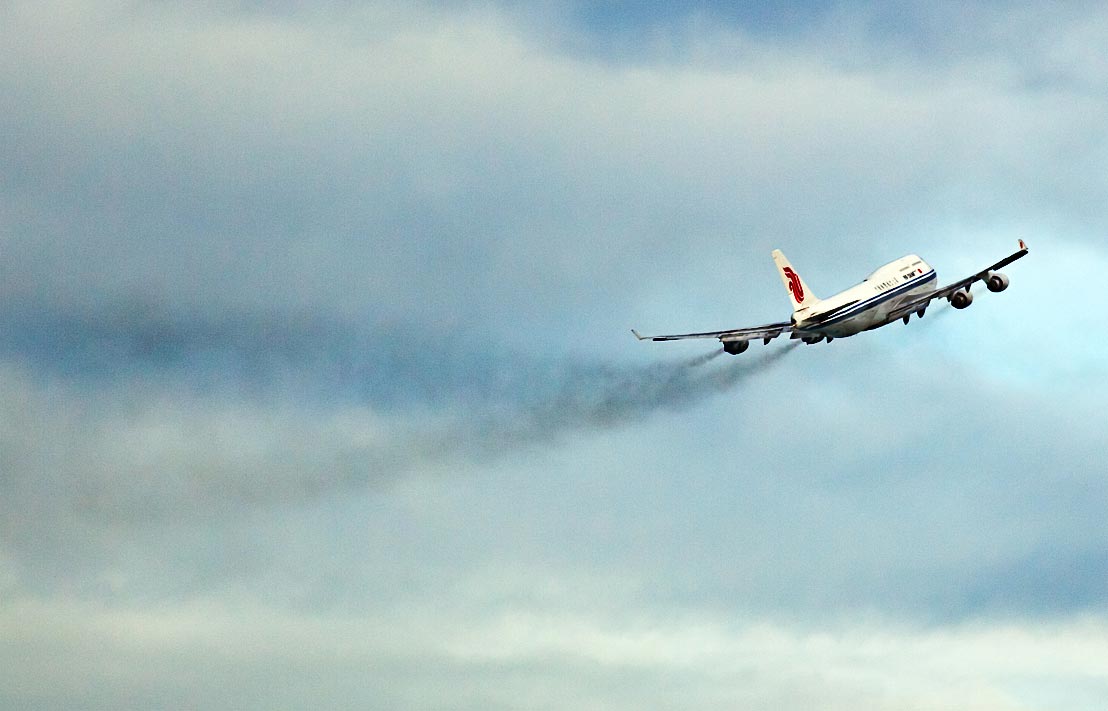EPA Announces First Steps to Cut Carbon Pollution From Aircraft
Victory
—Action lays groundwork for domestic aircraft greenhouse emissions standards, regardless of international delay
Contact
The U.S. Environmental Protection Agency (EPA) announced today that it has begun a domestic rulemaking process to determine whether the fast-growing carbon emissions from American aircraft endanger public health and welfare. The agency expects to issue a proposed finding by late April 2015, along with a notice describing international efforts to set aircraft carbon emission standards by 2016.
The EPA action comes one month after the Center for Biological Diversity and Friends of the Earth, which is represented by Earthjustice, filed a notice of intent to sue the agency for failing to reduce aircraft greenhouse gas pollution.
While the EPA said it expects to follow the standards anticipated to be set by the International Civil Aviation Organization (ICAO), the Clean Air Act rulemaking process now underway requires the EPA to act domestically regardless of international action. In response to an earlier lawsuit by the Center, Friends of the Earth and others, a federal judge ruled three years ago that the EPA must address aviation’s carbon emissions.
“We are delighted that the EPA has finally taken the first step to reduce the airline industry’s massive and ever-increasing greenhouse gas pollution, a dangerous threat to our climate,” said Vera Pardee, a senior attorney with the Center for Biological Diversity’s Climate Law Institute. “After nearly two decades of inaction, we don’t know if the international community will issue meaningful carbon emission standards by 2016. But the good news is that the EPA must, and will, act—despite international foot-dragging. That reality may even lead to the first enforceable aircraft climate change treaty the world has known.”
Dramatic aviation emission reductions are readily achievable, a recent International Council on Clean Transportation report shows, despite the airline industry’s claim that fuel costs already forces airlines to operate as efficiently as possible. The report found a 26 percent gap between the most and least fuel-efficient airlines serving America’s domestic market.
“EPA’s action today gets us on the right track to tackle the carbon output of the aviation industry—a sector that has flown beneath the radar and not received the scrutiny it merits,” added Friends of the Earth analyst John Kaltenstein. “A good deal of work lies ahead for the agency, though, and we’ll see moving forward if it has the resolve to make a real impact, or if this effort is more show than substance.”
Aviation accounts for about 11 percent of carbon dioxide emissions from the U.S. transportation sector and is one of the fastest-growing sources of carbon pollution, rising between 3 percent to 5 percent a year. Carbon emissions from global aviation will quadruple by mid-century without action.
”EPA’s announcement is good news for the climate and for the rule of law,” said Martin Wagner, a managing attorney with Earthjustice. “It is important, however, that EPA not let ICAO foot-dragging or industry resistance slow its process or weaken the standards it adopts. EPA has a statutory responsibility to regulate global warming pollution, and the authority to do so in a manner that will substantially reduce those that come from aircraft.”

Additional Resources
About Earthjustice
Earthjustice is the premier nonprofit environmental law organization. We wield the power of law and the strength of partnership to protect people's health, to preserve magnificent places and wildlife, to advance clean energy, and to combat climate change. We are here because the earth needs a good lawyer.